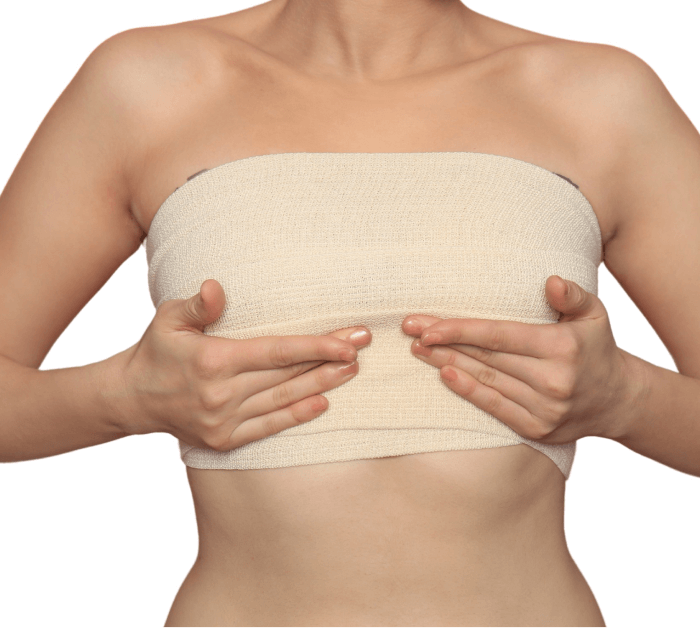

Breast Augmentation is one of the most commonly performed plastic surgery procedures. The breast size is increased while creating a more rounded and slightly lifted shape. This is most commonly done by the use of breast implants and a short hidden incision but can also be done using a transfer of your own fat.
The majority of women are good candidates for this procedure but patients must not be pregnant or breastfeeding and their breasts should be fully developed. Dr. Davison assesses each patient during their consultation appointment to determine if a candidate will benefit from this surgery.




Each person’s body is unique therefore recovery time varies. On average, most women recover in about 6 weeks. Dr. Davison will provide an accurate timeline during the consultation appointment.
Women of any body weight may be candidates for a breast augmentation, but some patients who are extremely thin will have less coverage over the implants. These implants could therefore be more noticeable and this might not be the look the patient desires. Patients who are extremely thin should choose breast implants that are proportionate to their overall body. Dr. Davison can recommend the appropriate implant size during a consultation appointment.




Yes, this surgery is safe but, like any surgery, there are risks. Dr. Davison will outline the risks and benefits of this procedure and answer questions during the consultation appointment.
The first breast implants were used in the 1960s and have undergone several generations of improvement in design and material composition. Dr. Davison typically suggests smooth surfaced silicone gel (“gummy bear”) implants. The dimensions and profile of the ideal implant for each patient is determined based on your chest anatomy in keeping with your goals. Dr. Davison and his team will help determine what is best for you during the consultation.
The benefit of Silicone implants is that they feel the most natural. They hold their shape yet are relatively soft and compressible. They show less rippling than saline implants. There are different levels of cohesivity (firmness) of silicone implants and Dr. Davison can discuss the benefits of each and which may be best for each patient. There are also a wide range of sizes and dimensions, depending on your desired outcome.
The primary benefit of a saline-filled implant is that it can be placed with a slightly smaller incision, because it can be inserted while empty and then filled once inside the pocket. The fill volume can also be adjusted at the time of surgery to correct for subtle asymmetry. However the downside is that they can show more rippling in thin patients and may feel less natural than a silicone gel-filled implant. Some patients also feel more comfortable with the idea that Saline-filled implants are filled with salt-water, which is a physiologic solution of similar salt concentration to the body’s natural circulation system. If a saline implant becomes deflated it is easily known because it will usually collapse completely. The shell or outer wall of Saline implants is made of non-toxic medical grade silicone. All implants undergo rigorous testing and quality control.
Dr. Davison typically uses either a hidden incision in the IMF fold (fold underneath the breast) or peri-areolar (at the junction of the lower half areola and normal skin). Each incision has its benefits and can be discussed during consultation.
There is a choice of placing an implant over or underneath the Pectoralis muscle of the chest. Again both have their benefits depending on the patient. Dr. Davison has considerable experience placing implants in the sub-pectoral space (below the muscle) or above the muscle (usually in a sub-fascial plane, which is above the muscle but underneath the layer of tissue that separates the breast tissue from the Pec muscle).
Fat grafting involves removing unwanted fat from another location in your body, typically the abdomen, flanks (love-handle area), or inner thighs. This is done by tiny 3-4 mm incisions using a liposuction cannula. The fat is kept sterile and processed to isolate only the high quality young fat cells and associated stem cells. This processed fat graft can then be distributed as needed to augment and shape the breast. This is a good natural alternative to implants for those interested in a small to moderate breast augmentation. The key limitation of fat grafting is that the maximum amount that can be reliably augmented at one time is between 100-300 mL per session (but this can vary widely by patient, depending on their original breast size and shape). Also, only 60-70% of the fat survives long-term (beyond 3 months), regardless of technique used. This is therefore adjusted for during the surgical planning and extra fat is transferred to compensate for the partial absorption . However the fat that survives will then last a lifetime and change with you (gaining or losing weight).
Please reach out to us by phone or by filling out our contact form in order to schedule a consultation.
Dr. Davison is a Canadian board certified Plastic Surgeon and an Assistant Professor of Plastic Surgery at McGill.